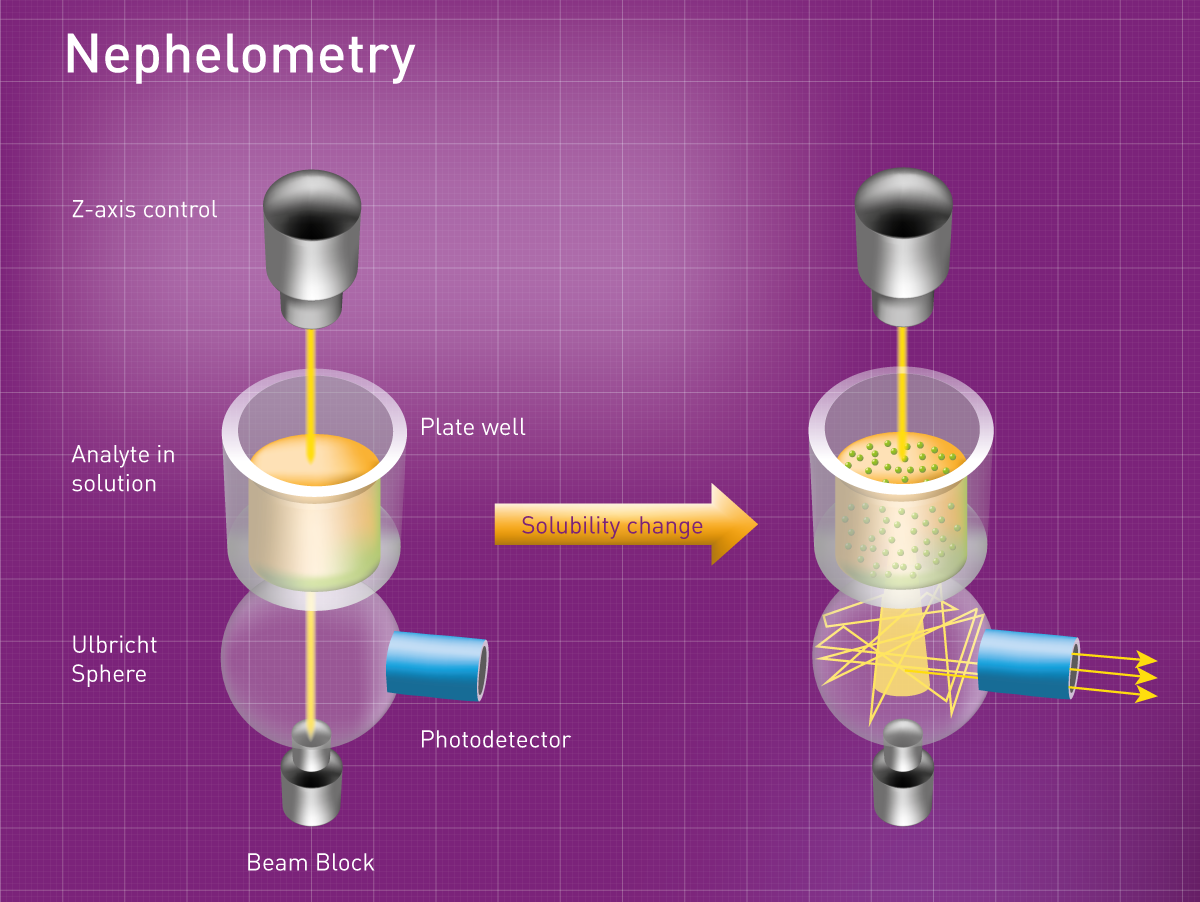In a world where the difference between success and failure in pharmaceutical formulation hinges upon the precise analysis of particles, technology has risen to the challenge by providing highly accurate and reliable tools. Among these advanced technologies, the nephelometer has emerged as a powerful solution, widely adopted for particle analysis across a variety of disciplines. For directors and scientists in biopharma formulation and process development, understanding the capabilities and common uses of this technology is essential. This article explores the applications of the nephelometer, highlighting how this innovative tool is transforming multiple scientific domains.
A Primer on Nephelometry: Understanding Light Scattering
At its core, nephelometry measures the intensity of scattered light when a beam passes through a liquid or gas containing suspended particles. Unlike turbidimeters that measure light transmission, nephelometers detect scattered light at precise angles, typically 90 degrees to the incident beam. By quantifying scattered photons, nephelometers yield precise data about particle concentration and properties such as size and density.
The advancement of nephelometric technology is linked closely to improvements in laser optics and detection electronics, allowing these instruments to achieve extremely low detection limits—below 0.01 Nephelometric Turbidity Units (NTU)—making them indispensable for rigorous, precise applications. A more detailed exploration of how a nephelometer works is available through this informative resource.
Water Quality Assurance: Turbidity Monitoring for Compliance and Safety
One of the primary uses of nephelometers is the monitoring and management of drinking water quality. Ensuring water clarity isn’t merely about aesthetic considerations—it’s directly connected to public health. High turbidity often indicates the presence of harmful microorganisms or contaminants. Nephelometers continuously monitor turbidity in municipal water treatment facilities, verifying compliance with stringent regulatory standards (for example, maintaining filtered water turbidity below 0.3 NTU on monthly averages). By providing rapid, accurate readings, nephelometers enable swift intervention to protect public health, ensuring that waterborne disease outbreaks remain rare occurrences.
In wastewater treatment settings, nephelometers help operators optimize coagulant dosing, enhancing the effectiveness of filtration and reducing operational costs. The real-time feedback provided by these instruments can help biopharma facilities manage water quality, especially when water purity is crucial for process consistency.
Atmospheric and Environmental Applications: From Clouds to Air Quality
Beyond water quality, nephelometers are powerful tools for atmospheric research. Scientists use integrating nephelometers to characterize aerosol particles, crucial to understanding cloud formation, climate change, and pollution dispersion. For example, laboratories compliant with ACTRIS protocols deploy nephelometers with stringent humidity controls to accurately measure aerosol scattering. Such precise measurements significantly contribute to our knowledge of air quality, providing essential data on particulate matter (PM10 and PM2.5) for urban air quality networks and regulatory agencies worldwide.
Industrial and urban air quality networks utilize nephelometric monitoring extensively, ensuring compliance with particulate matter regulations (PM2.5 and PM10). This ongoing surveillance provides critical evidence to policymakers, helping shape informed regulations that improve public health outcomes and environmental quality.
Specialized Applications: Innovation in Portability and Field Use
Recently, portable nephelometers have emerged as a game-changer in scientific research and public safety. These compact, rugged instruments enable rapid field testing in remote or challenging environments, such as post-disaster scenarios or remote areas lacking laboratory infrastructure. One innovative use includes detecting pesticides in food samples through turbidity changes, providing rapid point-of-use safety assessments with remarkable accuracy.
In space exploration, the utility of nephelometers has extended beyond our planet—such as the inclusion of a nephelometer aboard the Galileo spacecraft to study Jupiter’s atmospheric properties. Such unique deployments highlight the technology’s adaptability, precision, and reliability, even under extreme conditions.
Nephelometry in Biopharma: Protein Analysis and Drug Formulation
Directors and scientists in biopharma formulation and process development will find particular relevance in nephelometry for particle analysis. For example, the technique is widely employed to measure protein aggregation—an essential consideration during formulation development. The precision and sensitivity of modern nephelometers allow researchers to monitor protein stability and interactions, crucial in designing therapeutics with optimal efficacy and shelf life.
Additionally, nephelometric analysis enables high-throughput solubility screening, a process that streamlines early-stage drug discovery. Rapid, accurate determination of solubility can significantly reduce the time and costs associated with compound optimization, ultimately accelerating the development pipeline and enhancing efficiency in pharmaceutical labs.
Enhancing Education and Training through Advanced Technology
Interestingly, nephelometers also play a role in education and research training. Institutions leveraging recent educational technology research have discovered that practical, hands-on use of advanced analytical instruments like the nephelometer not only deepens understanding but also inspires innovative thinking in young scientists.
Looking Ahead: Leveraging Nephelometry for Scientific Advancement
From safeguarding drinking water to guiding breakthroughs in biopharmaceuticals and unraveling the complexities of our atmosphere, the applications of nephelometric technology are vast and continuously evolving. Today’s nephelometers combine unmatched sensitivity with user-friendly portability, enabling precise particle characterization across diverse environments and demanding conditions.
As a director or scientist in biopharma formulation and process development, your work demands accurate, reproducible, and reliable data. The nephelometer offers just that, bridging innovation with practicality and setting new standards for particle analysis. Explore the transformative potential of nephelometric technology and consider how incorporating this powerful analytical technique into your laboratory can enhance your processes, boost your confidence in regulatory compliance, and drive your next research breakthrough.



